Let’s start with the last question first, “Why should I care?”. Those of you who play an instrument that’s not either of these already know a few of the jokes about them:
- A couple of tuba players walk past a bar – hey, it COULD happen!
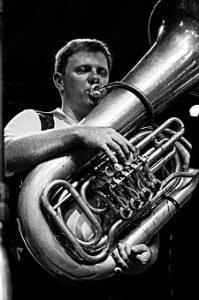 How many French horn players does it take to replace a light bulb? Four, one to screw in the bulb, and the other three to check for valve string adjustments.
How many French horn players does it take to replace a light bulb? Four, one to screw in the bulb, and the other three to check for valve string adjustments.
So, now that you’ve got a visual on each of these horns, let’s run down the question. Ultimately, you should care about the sounds that they make – in fact, you already do!
Have you ever heard the melody that goes with the character of Luke Skywalker? In the Star Wars movies,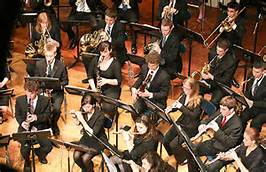 his character is always introduced by the French horn. The sounds made by expert French horn players are featured in the sound tracks of a great number of movies, such as “Braveheart”, “Wyatt Earp”, “Red Dawn”, “Dances with Wolves”, “Cowboys”, “Mask of Zorro”, “Cocoon”, the “Star Trek” movies, “Field of Dreams”, “Glory”, and a huge number of others.
his character is always introduced by the French horn. The sounds made by expert French horn players are featured in the sound tracks of a great number of movies, such as “Braveheart”, “Wyatt Earp”, “Red Dawn”, “Dances with Wolves”, “Cowboys”, “Mask of Zorro”, “Cocoon”, the “Star Trek” movies, “Field of Dreams”, “Glory”, and a huge number of others.
If we look at the brass section of the orchestra as if it were a vocal group, the trumpets would be the soprano ‘voices’, the French horns would be like the altos, the trombone would represent the tenors, and the tuba would be the equivalent of the basses.
Most French horns would stretch out to over 12 feet (3.7 meters) in length if the pipes were straight.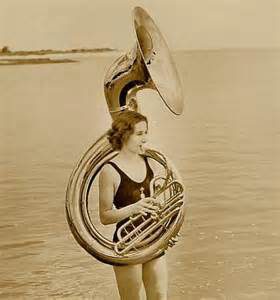

Most tubas would uncoil to around 18 feet (5.5 meters).
 The haunting, romantic sounds of the French horn have come to be associated with movie scenes involving horseback riding, chases, heroes, the forest, outer space, feelings of love, ships-on-the-water, storms, impending conflict, and moments of longing romance, among many others.
The haunting, romantic sounds of the French horn have come to be associated with movie scenes involving horseback riding, chases, heroes, the forest, outer space, feelings of love, ships-on-the-water, storms, impending conflict, and moments of longing romance, among many others.
Film composers have been using this catalog of emotional reinforcement of the specific movie scene for many years now, and to great effect.
When the “Star Wars” franchise began in 1977, it began the reintroduction of full-orchestra movie scores to the industry after an absence of at least 20 years.
John Williams, who wrote the soundtrack for “Star Wars”, helped popularize the idea that film music could stand on its own as a presentation in an orchestra concert setting. He began including his film-score work while he was conductor of the Boston Pops orchestra, making the music familiar to millions, who then went to see the movies.
It was a great marketing success, and totally changed the way movies and their music were sold to the public.
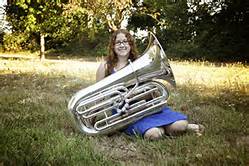 A full-orchestra score always includes a tuba. The least-known, and likely the most abused instrument of the orchestra is also one of the most important.
A full-orchestra score always includes a tuba. The least-known, and likely the most abused instrument of the orchestra is also one of the most important.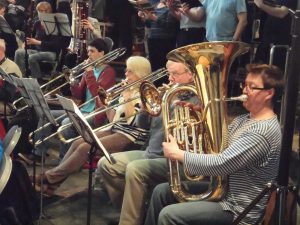
Players and listeners of rock, blues, jazz, bluegrass, and other forms of similar music always hear the bass guitar or upright bass, but may not always hear it consciously.
If you’ve ever been to a concert when the bass is interrupted by a bad cable, or speaker failure, or the player has to quit for a moment because of a broken string, you notice immediately that the bass part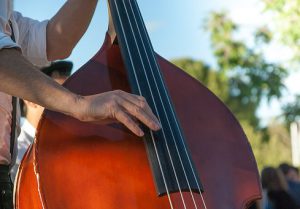 can’t be heard. When the problem is resolved, you go back to hearing the group as a whole, without noticing the bass.
can’t be heard. When the problem is resolved, you go back to hearing the group as a whole, without noticing the bass.
It’s the same with a full orchestra. You may not hear the tuba when the entire brass section is playing, but you would definitely miss it if it dropped out. It often plays the bottom note of any chord – the root – and just as a tree without roots would fall, so might the chord without its root.
The idea that tubas are just to be made fun of is, frankly, a lot of their own fault. There’s quite a lot of solo tuba literature written and performed, some of it just embarrassing, like “Asleep in the Deep’, and the ever-popular “Tubby the Tuba”. In that vein, here’s a YouTube of a tuba player attempting the piccolo solo on the Sousa march “Stars and Stripes Forever” (https://youtu.be/zmFYgc-Emmc)
Many serious pieces exist however, and can be heard whenever a talented tubist is willing. Generally, this will be in the neighborhood of a college with a true music department, where a band or orchestra director has the pull to bring that person on stage. For instance, here’s a link to the Ralph Vaughan-Williams Concerto for Bass Tuba.
It is arguably the loudest brass instrument, but because it often plays the note of the lowest pitch, it’s very hard to hear its relative volume.
The bass in all our open air speaker systems is perceived as omni-directional, because lower frequencies are hard to tell as to incoming direction. It’s the same with a tuba – you may not be able to hear it separately, but you can feel when it’s playing.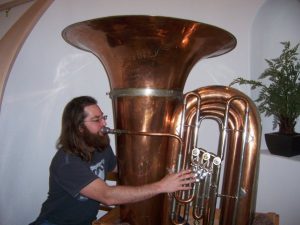
This post started out as a reaction to an image search on one of the popular browsers, the term used was ‘tuba’, and I came up with pictures of French horns, flugel horns, European tenor horns and baritones, mellophones, trombones, trumpets, and the ever-popular violin (violins? on a tuba image page? really?).
So now you know the differences between them, and perhaps why you should care.
The next time you’re watching a movie, take a moment and really listen to the soundtrack – you’ll know something now about what you’re hearing, and why it affects you the way it does!


Hi, Robert, and thanks for your interest! I played electric bass for years, and I’m aware of the rhythmic potential of the popular bass instruments. It’s always interesting to me to find out how people use their early musical experiences in the rest of their lives, thanks for sharing!
Having been a Tuba player growing up until the Rock & Roll bug bit me I really enjoyed this article, it was especially enlightening to learn about the role the French Horn has played and no doubt will continue to play in movie scores. You mention how a bass instrument fills out the bottom end but it can also be a very important component of the rhythm of the orchestra .Keep up the good work sharing the many forms of music out there.
Hi, Nick, and thanks for your interest! I have always appreciated tuba players, because of the important role they fulfilled in all the ensembles that I played French horn in. It’s always reassuring to know when somebody competent is in charge of the root of the chord. As a player, you are one of the ones who can listen to a film score, or a concert band, or even a British-style brass band, and enjoy what’s going on in the bottom end of the music. Thanks for stopping by!
I actually used to play the tuba back when i was in high school, after playing the trumpet for a few years. I enjoyed it and also found it to be one of the easier brass instruments to play because of how big the mouth piece is. Its a lot easier to vibrate your lips to generate sounds with the mouth piece being as big as it is.
Hi, Mitch, and thanks for your interest! The full orchestra sound is what got me into music school, and I’ve played in one ever since. I’m so glad you stopped by, and that we have a common interest in the orchestra instruments!
Great article on Tubas and French Horns. I like to hear a full blown orchestra live. There is nothing more powerful to awaken your senses, perk up the ears and send chills down your spine. I once saw a guy do a tuba solo in a professional orchestra and it was amazing. The poor guy turned purple but got a standing ovation.
Great Stuff!
Thanks for sharing,
Mitch